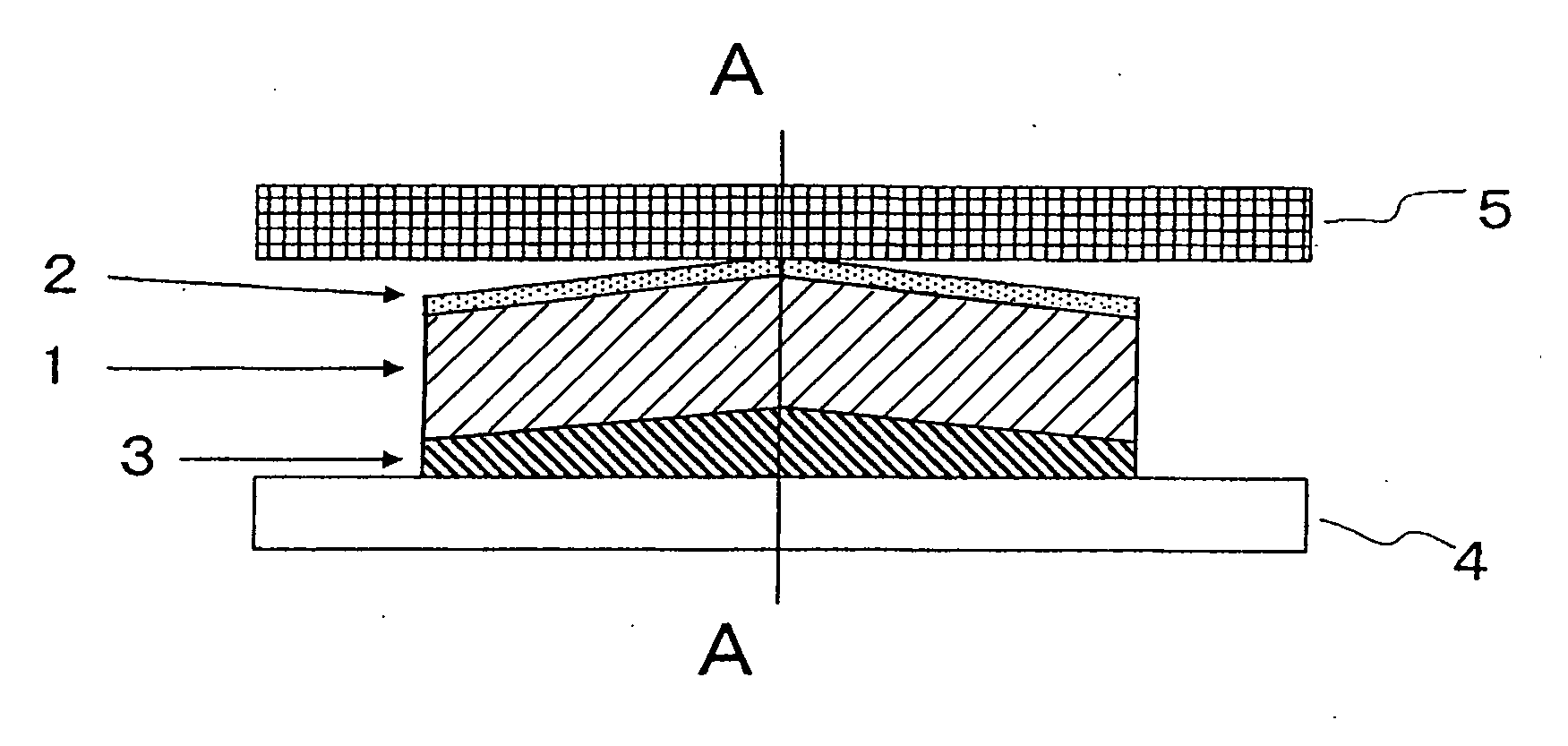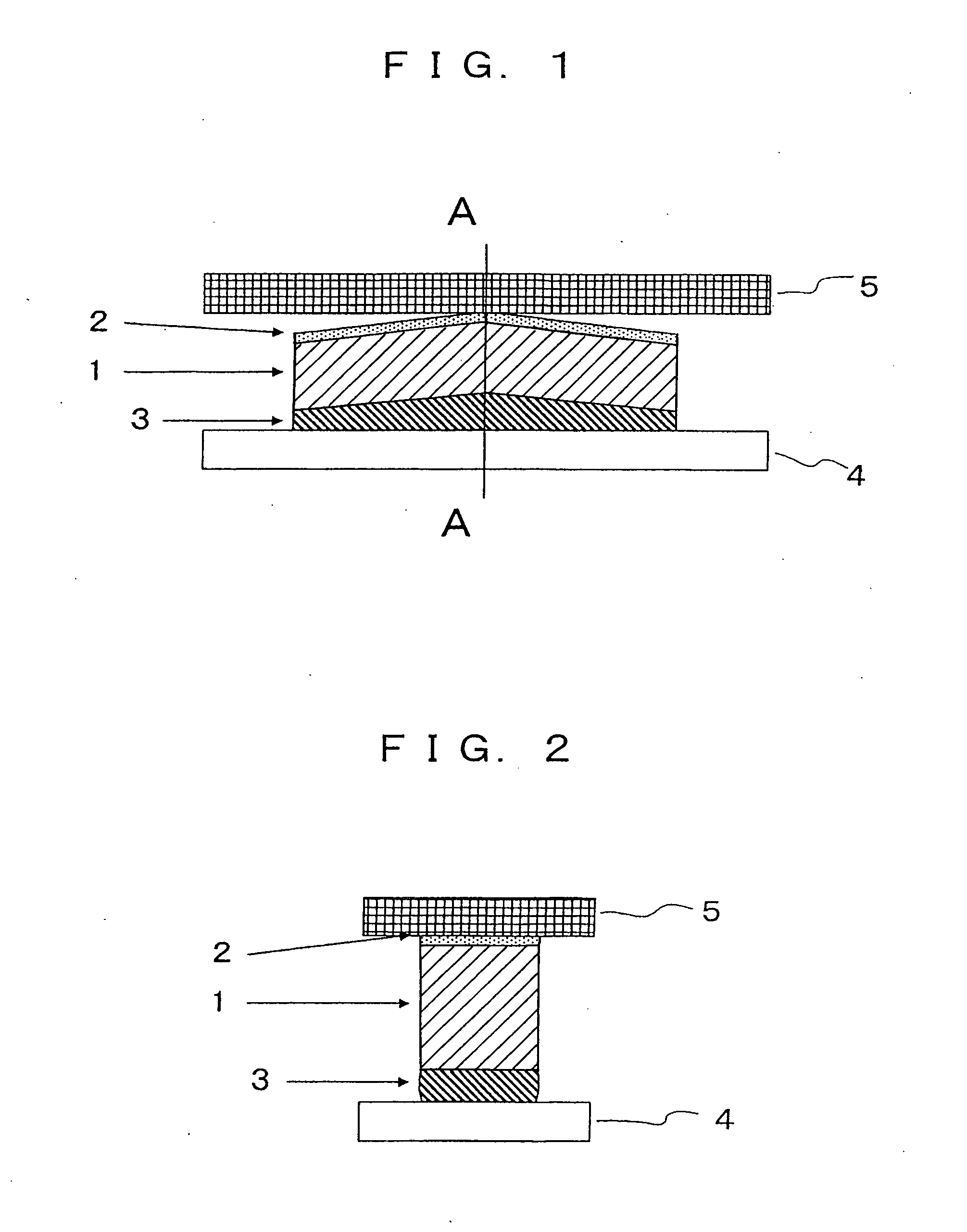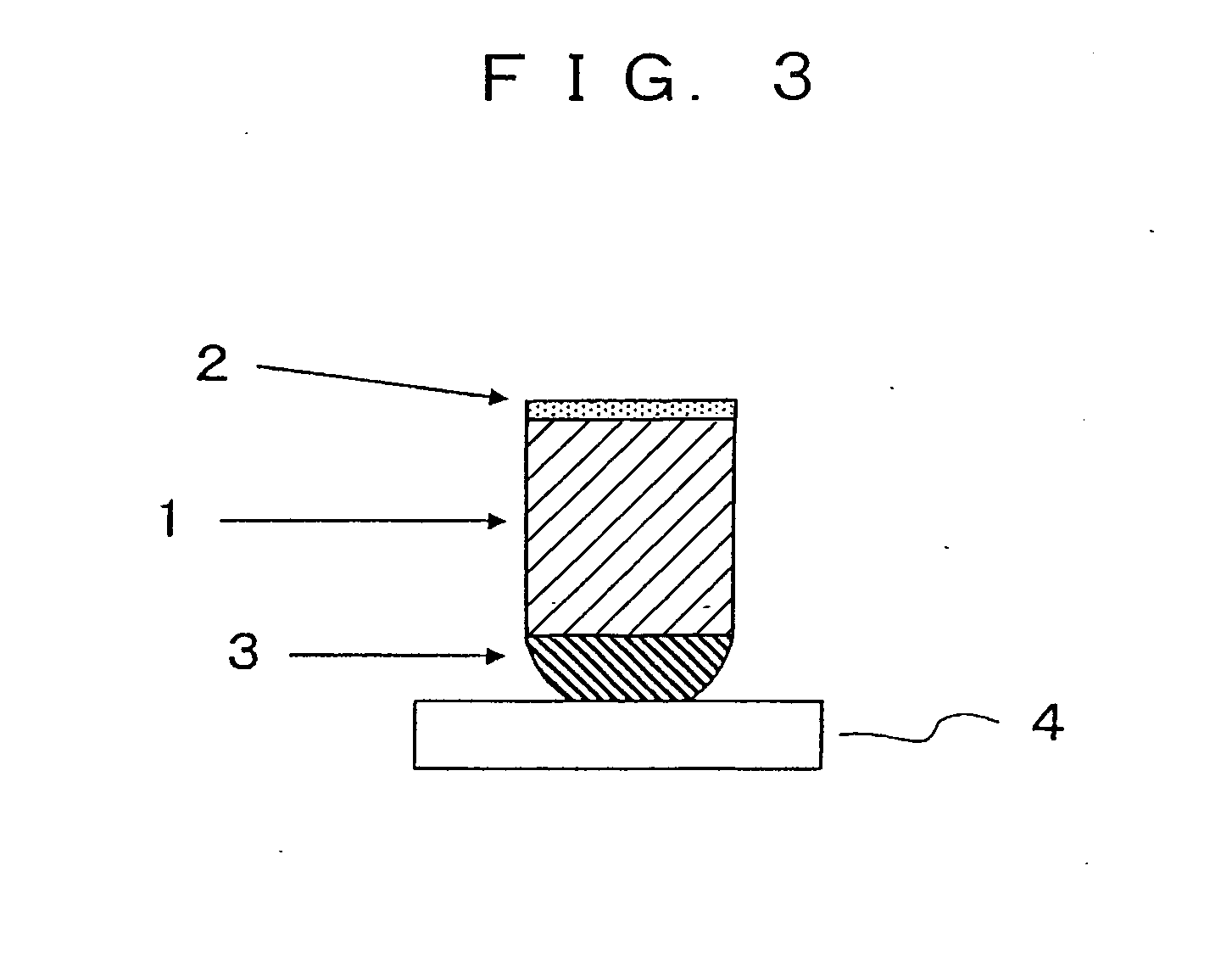Pellicle for lithography
a lithography and pellicle technology, applied in the field of lithography, can solve the problems of poor quality, deformation appearance, lowering the performance and the manufacture yield of semiconductor devices and liquid crystal display boards,
- Summary
- Abstract
- Description
- Claims
- Application Information
AI Technical Summary
Benefits of technology
Problems solved by technology
Method used
Image
Examples
example 1
[0034]A pellicle frame made of an aluminum alloy (outer dimension being 149 mm×113 mm×4.5 mm, the frame width 2 mm, flatness of both the agglutinant-side and the adhesive-side annular faces of the frame 10 micrometers) was washed in pure water, and an acrylic resin agglutinant SK-Dyne 1495 (a commercial product of Soken Chemical & Engineering Co., Ltd.) was applied to the agglutinant-side annular face of the frame and was let to sit for one hour at room temperature. A separator was laid on a surface of a quartz glass plate having a flatness of 3 micrometers, and the pellicle frame was placed on it with the agglutinant layer lying on the quartz glass plate surface via the separator. Thus the agglutinant layer on the pellicle frame was molded to have a flat face. Thereafter, the quartz glass plate was heated and kept at 70 degrees centigrade for 12 hours whereby the agglutinant was precured. After this precuring of the agglutinant, the frame was removed from the quartz glass plate and...
example 2
[0041]A pellicle frame made of an aluminum alloy (outer dimension being 149 mm×113 mm×4.5 mm, the frame width 2 mm, flatness of both the agglutinant- and the adhesive-side annular faces of the frame 10 micrometers) was washed in pure water, and an acrylic resin agglutinant Corponyl 2260 (a commercial product of The Nippon Synthetic Chemical Industry Co., Ltd.) was applied to the agglutinant-side annular face of the frame and was let to sit for one hour at room temperature. A separator was laid on a surface of a quartz glass plate having a flatness of 3 micrometers, and the pellicle frame was placed on it with the agglutinant layer lying on the quartz glass plate surface via the separator. Thus the agglutinant layer on the pellicle frame was molded to have a flat face. Thereafter, the quartz glass plate was heated and kept at 70 degrees centigrade for 12 hours whereby the agglutinant was precured. After this precuring of the agglutinant, the frame was removed from the quartz glass pl...
example 3
[0046]A pellicle frame made of an aluminum alloy (outer dimension being 149 mm×113 mm×4.5 mm, the frame width 2 mm, flatness of both the agglutinant- and the adhesive-side annular faces of the frame 10 micrometers) was washed in pure water, and an acrylic resin agglutinant SK-Dyne 1499 (a commercial product of Soken Chemical & Engineering Co., Ltd.) was applied to the agglutinant-side annular face of the frame and was let to sit for one hour at room temperature. A separator was laid on a surface of a quartz glass plate having a flatness of 3 micrometers, and the pellicle frame was placed on it with the agglutinant layer lying on the quartz glass plate surface via the separator. Thus the agglutinant layer on the pellicle frame was molded to have a flat face. Thereafter, the quartz glass plate was heated and kept at 70 degrees centigrade for 12 hours whereby the agglutinant was precured. After this precuring of the agglutinant, the frame was removed from the quartz glass plate and the...
PUM
 Login to View More
Login to View More Abstract
Description
Claims
Application Information
 Login to View More
Login to View More - R&D Engineer
- R&D Manager
- IP Professional
- Industry Leading Data Capabilities
- Powerful AI technology
- Patent DNA Extraction
Browse by: Latest US Patents, China's latest patents, Technical Efficacy Thesaurus, Application Domain, Technology Topic, Popular Technical Reports.
© 2024 PatSnap. All rights reserved.Legal|Privacy policy|Modern Slavery Act Transparency Statement|Sitemap|About US| Contact US: help@patsnap.com










